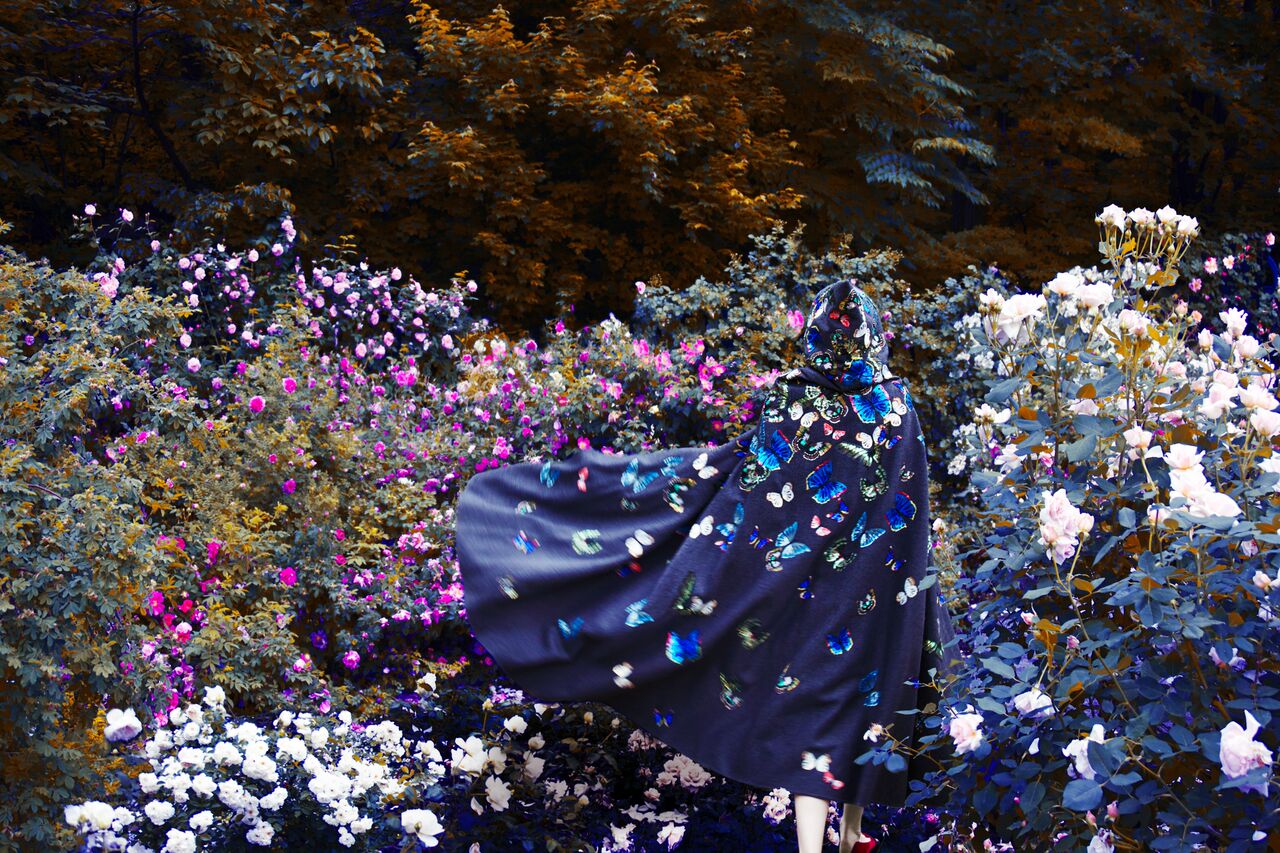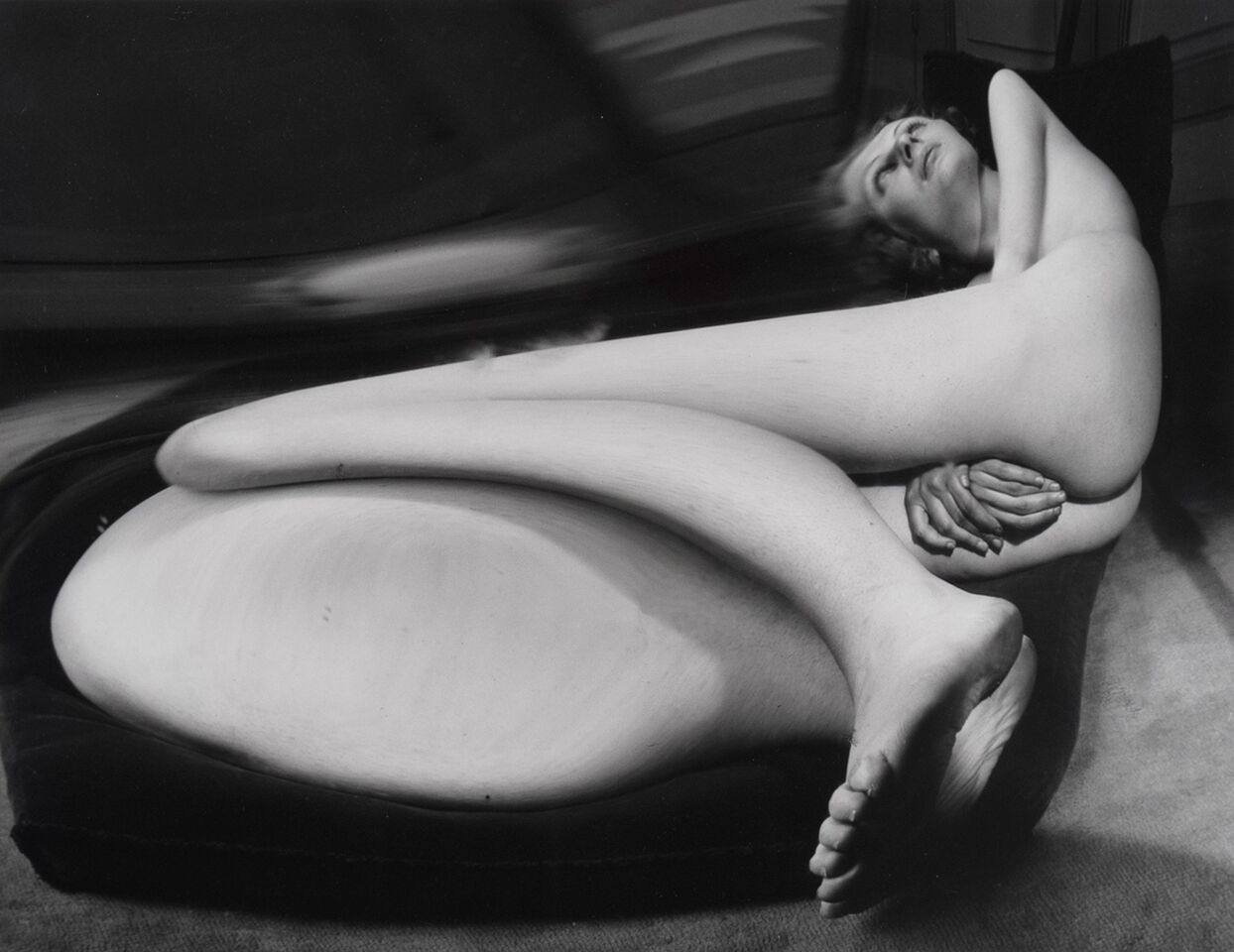
The paired exhibitions “André Kertész: Girl Before a Mirror” and “Erik Madigan Heck: Old Future,” at Jackson Fine Art through March 17, bring together work by two artists who have produced distinctly painterly images.
Invited in 1933 to produce photographs for La Sourire, a French magazine that the young Hungarian émigré in Paris later described as “satiric, risqué,” Kertész posed nude female models in front of distorting mirrors and produced a body of work that would form, 40 years later, the contents of a book titled Distortions. The Jackson Fine Art exhibition title “Girl Before a Mirror” is a reference to the 1932 Picasso painting that established a different way of distorting the image of the female body. Several possible essays, whether feminist or formalist, could follow from that implied confluence of painting and photography.

Erik Madigan Heck is rightly viewed as a descendant of that dialogue between painting and photography, and of the idea of distorting, in his case, a body not only clothed but extravagantly so, to the point of obscuring the body itself. In open dialogue with the fashion photography with which he has established his reputation, Heck’s fine-art work turns fashion into a tool of abstraction, in photos that are more compositions in vivid color and complex patterns than unambiguous images. His photographs are as much distortions of the literal body in the second decade of the 21st century as Kertész’s funhouse-mirror productions were in 1933. Both photographers reflect strikingly their respective art-historical moments without being imitators of anyone else’s style.
That being said, what is going on in this work? We can debate whether Kertész’s nudes tend more towards the grotesque or the beautiful; with a couple of exceptions, I vote for what has been called “difficult beauty” (a formulation I originally heard long ago from curator Debra Wilbur). With Heck, sheer beauty wins beyond disputation, but it is not the beauty of unadorned or even adorned bodies as such (with the possible exception of Etro Boy, the only work in which visible flesh predominates). In the Without a Face series, the dominance of vivid coloration and pattern is so absolute that in such works as Without a Face (Yellow) there is no visible skin at all, and even the hair has become an abstraction. Muse, Old Future presents the back and shoulders of a model whose head is so completely obscured by an enveloping hat that there is nothing to be seen but the clothing.

Most of the works in the show are reproduced in the 2017 book Old Future, in which an essay by Harper’s Bazaar UK editor-in-chief Justine Picardie quotes stylist Leith Clark as reporting, “People often think that Erik’s work is digitally manipulated, …but this isn’t the case. The magic doesn’t occur afterwards. It happens right there, with just him and his camera.” This implies that Heck doesn’t engage in digital manipulation, which is, strictly speaking true in that the photographs are set up exactly as they appear in the final image. Saturation and flattening are among the few alterations of what would be apparent to a viewer on site. This is not true, however, of at least one series: In the same volume, Heck notes in an interview that he produced work for Comme des Garçons, also represented in the Jackson Fine Art exhibition, that was derived from digital manipulation of screenshots, so it appears that Clark’s observation about Heck’s technique is limited to the astonishing combinations of pattern and palette produced for Harper’s Bazaar.
By and large, Heck’s diverse oeuvre is united by sensibility and saturated color. It’s possible to follow themes across different photographic subgenres; my favorite pair in this regard would be Ann Demeulemeester, Without a Face, in which the figure facing away from the viewer blends into the vertiginously curving backdrop pattern, and Valentino, Old Future, a gardenscape in which the butterfly pattern of the fabric covering the figure who crouches among the flowers creates an uncanny species of camouflage.
By such simple but highly subtle subterfuges, Heck produces work that alludes to earlier generations of romantic painting and photography. That it also fits into the category of fashion photography is incidental to its emotional impact.
“André Kertész: Girl Before a Mirror” and “Erik Madigan Heck:Old Future” are on view at Jackson Fine Art through March 17.




